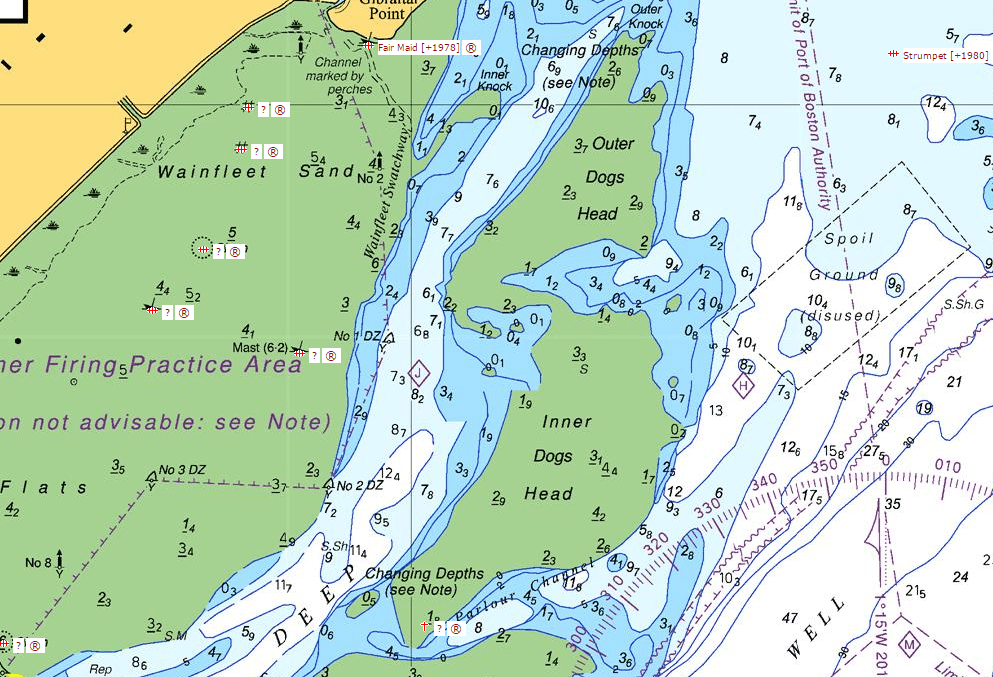A few examples of how we have helped our client manage marine UXO hazards.
Zetica has undertaken a range of marine UXO consultancy projects, including:
- Risk assessments.
- Survey design and data interpretation services.
- UXO detection surveys.
Hydro-Sedimentary Study
Zetica was commissioned to undertake a hydro-sedimentary study for UXO burial at a proposed offshore wind farm and cable route site off the Scottish coast in the North Sea.
The aim was to assess and identify the risk provided by UXO covered by sedimentary structures on the Site, to determine the location and likely depths of any UXO, and provide options to remove or avoid these hazards.
The Site had been part of a military training area, encompassed by extensive practice ranges, and there was a high probability of UXO encounter on the Site.
Zetica collaborated with an expert in marine and coastal processes to undertake the study. We reviewed the existing UXO desk study and mitigation reports, geophysical and geotechnical information to confirm:
- The anticipated ordnance types to be encountered.
- Likely burial setting on deployment for UXO on different parts of the Site.
- The probability of encountering UXO.
- The probability of detonating UXO.
- The consequences of an accidental UXO detonation.
Historical bathymetric data was reviewed to better understand the morphological changes of the seabed. A scour assessment was undertaken to interrogate the potential for scour hole development around potential UXO.


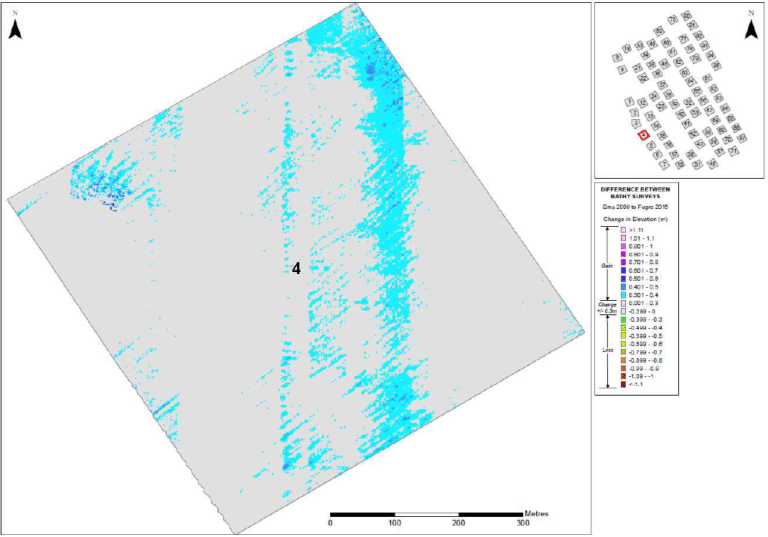
Through the above, a conceptual geomorphological model was established demonstrating sediment transport processes and movement of small (migrating sand waves) and large-scale (sand banks) bedforms which had the potential to cover/uncover UXO.
This enabled us to determine long-term trends in sediment accretion and erosion that would have altered the burial setting of UXO deployed during WWI and WWII. The general trend showed that sediment accretion was generally minimal, indicating that the potential for UXO to be buried at significant depths was generally low.
Using the model and the UXO risk assessment information, several GIS layers were produced that were combined to define areas of heightened UXO risk, identifying where UXO was likely to have been buried (and to what depth), and where it was likely to have been left exposed on the seabed.
This study allowed a detailed UXO survey design to be established, giving the client confidence that they would be able to detect the anticipated ordnance types across the Site, thereby having the option to investigate and remove any potential UXO/obstructions, whilst avoiding construction in areas where significant UXO sediment burial was expected.
UXO Risk Assessment for a Proposed Tide Gauge
Zetica was commissioned to undertake an offshore UXO desk study & risk assessment for the location of a proposed tide gauge in The Wash, East Anglia.
Our research identified the presence of a WWII practice bombing target on the site. Other potential sources of UXO hazard in the immediate vicinity included aircraft crashes and bomb jettisoning areas.
Having established the potential for a significant UXO hazard to be present, we analysed client-provided geophysical survey data. The aim was to determine whether itwas sufficient to identify a safe location for the tide gauge.
Using our own technical software, we were able to derive an estimate of the survey’s potential detectability range for the anticipated ordnance types on the site. This showed that, despite numerous magnetic anomalies being identified, it was possible that UXO on or buried beneath the seabed may not have been detected.
As such, we recommended that deep UXB detection should be undertaken to ensure the safe implementation of the tide gauge, preventing the client from taking any undue risks that may have come about from a misinterpretation of the survey data.
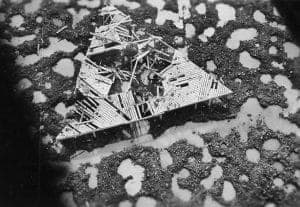
Assessment and survey for environmental monitoring stations
Zetica completed a detailed UXO risk assessment for a number of environmental monitoring sensors to be located within a 12,000ha area encompassing a tidal estuary.
It was known that extensive offshore military firing and bombing ranges had been active, with range templates covering the proposed sensor locations.
As with any Site with a history of military activity, Zetica began by compiling a detailed understanding of the ranges’ operational history. The Ministry of Defence (MoD) was approached for information and records were located at national and local archives.
Our research meant we were able to identify a variety of ordnance which had been expended across the site.
Efforts were made to find UXO clearance records for items which had been encountered washed upon the surrounding coastline. These would have corroborated the desk-based research and potentially demonstrated that sufficient clearance had been undertaken to de-risk parts of the Site.
Having confirmed military training as a source of UXO hazard, Zetica assessed the potential for UXO to migrate onto the Site by considering the effects of tidal currents, wave action and sediment pathways. A pragmatic assessment was made of which lighter items could migrate onto the site from outside areas.
As a result of a good and corroborative analysis of the information acquired, Zetica was able to zone the UXO hazards on the site from low to high and identify the associated risks to anticipated works.
Building on the conclusions of the UXO risk assessment, Zetica then undertook a geophysical survey of the areas where UXO hazards had been identified. Where magnetic anomalies were detected, Zetica’s geotechnical analysts were able to assess the likelihood of identified targets being UXO.
The Client was then able to position their equipment safely by avoiding the potential UXO targets identified by Zetica’s survey.
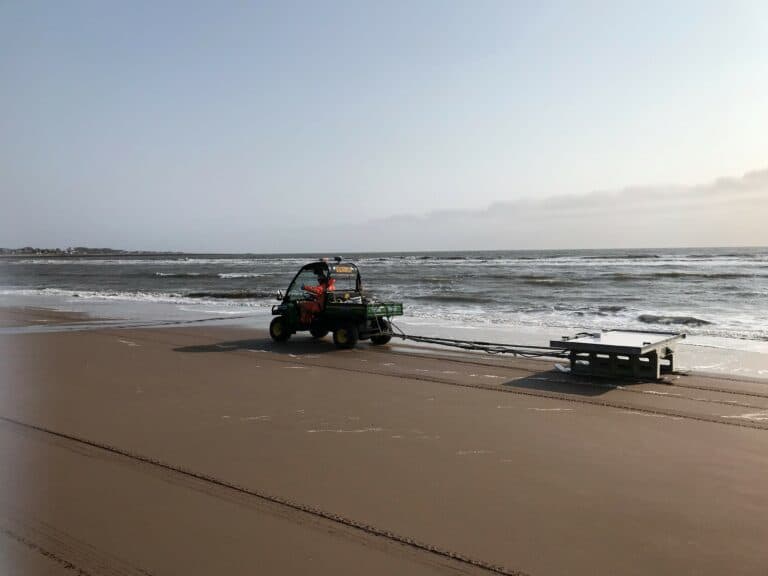
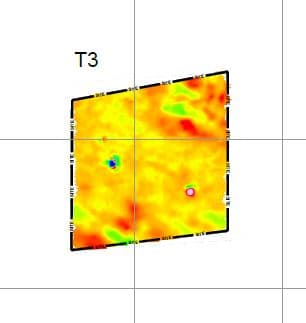
UXO Risk Assessment and Geophysical Data Review for Proposed Tidal Energy Centre
Zetica Ltd was commissioned to provide UXO consultancy during the development of a tidal energy centre. In a first phase of the project, Zetica undertook a desk based UXO risk assessment of the site. This identified a moderate UXO hazard level for the majority of the site.
A second phase followed, in which Zetica reviewed magnetometer data collected as part of an earlier marine geophysical survey that was aimed at characterising the sea bed geology and materials.
The review was required to understand the extent to which the existing magnetometer data could be used to understand or quantify the perceived UXO risk.
It was concluded that the survey design was appropriate for its original design purpose (geology) but was insufficient for UXO clearance activities.
Zetica designed a processing approach, and undertook a modelling study of anticipated UXO items. This revealed 3No. areas in which the response indicated a higher likelihood of an increased concentration of ferrous objects. Zetica recommended a higher resolution survey for the purposes of UXO clearance.

UXO Consultancy – Nord Stream
Zetica was commissioned to provide UXO consultancy for the Nord Stream project, the longest sub-sea gas pipeline in the world, connecting the Russian and German Baltic Sea coasts.
The first stage was an assessment of data from geophysical surveys carried out during the initial munitions screening. The review identified some data quality issues that affected the limits of detectability of UXO items and also some data processing failings.
Reprocessing the data with improved filtering allowed Zetica to improve the signal-to-noise ratio in the data, and increase the detection range for UXO items. Zetica provided a map of detectability for different UXO types, allowing in-fill work to be scheduled, maximising the eventual survey effectiveness.
Zetica was subsequently asked to support the Nord Stream 2 project, specifically to provide technical guidance during survey design, contractor appointment and data quality control of the munitions screening surveys.
As a first phase of technical support, Zetica undertook a modelling exercise in order to establish theoretical detectability limits for a range of anticipated munition types. These results were used to assist the Client in scoring contractor proposals for the planned munitions screening surveys.
Subsequently, Zetica reviewed the data processing and data quality of munitions screening surveys (including surrogate item trials) in order to assist the Client with ensuring that the appointed contractors were achieving the specified limits of detection.
Zetica identified sensors with elevated noise levels which were subsequently replaced, discussed filtering routines with contractors leading to improved data quality, and identified an error in data processing applied by one contractor which was subsequently rectified.
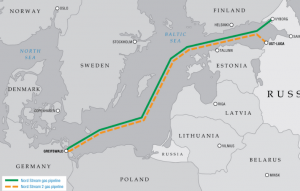

UXO Consultancy – FAB Link Cable Route
Zetica was commissioned to assess and undertake a quality assurance check of pre-acquired UXO detection survey data. The aim was to evaluate its effectiveness to identify and enable investigation of potential UXO that could affect the laying of a proposed cable between France and the UK.
Zetica’s review highlighted positional accuracy, survey design and survey coverage limitations. It also provided an understanding of the types of UXO items that were within the detectability limits of the survey data.
This was supported by a modelling exercise, which contributed to survey design recommendations for subsequent munitions screening surveys that will be required by contractors ahead of planned engineering work.
